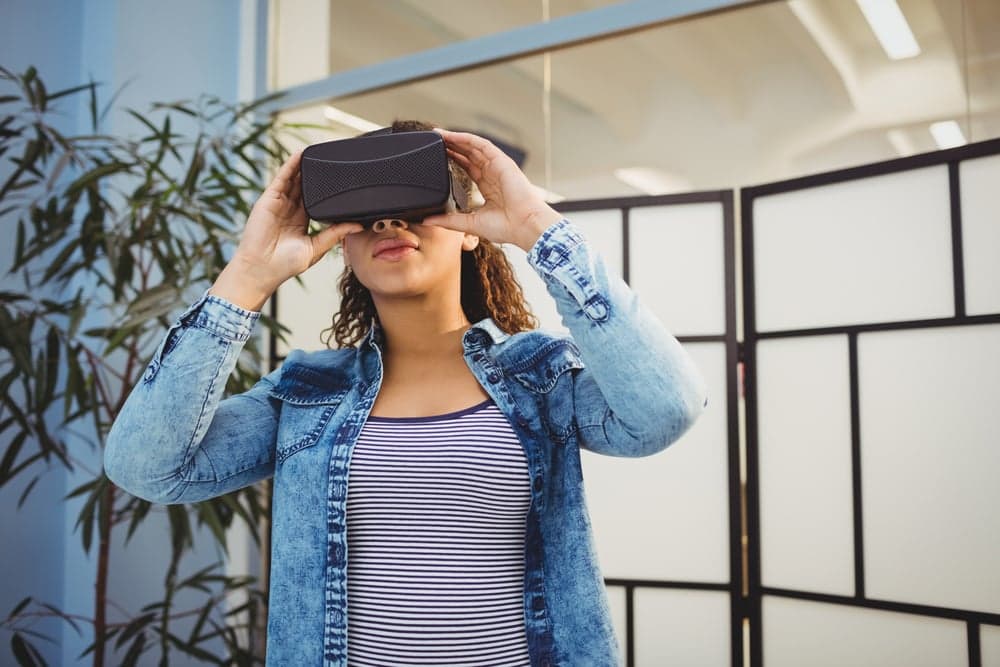Mastering Virtual Reality (VR) Content Development: An In-Depth Guide
Master the art of Virtual Reality (VR) content development with our in-depth guide. Learn about its benefits, challenges, best practices, and future trends.

VIG Learning Team

Introduction
Virtual Reality (VR) is revolutionizing the digital world, creating unparalleled immersive experiences across a variety of industries. As a B2B content strategist, developing expertise in VR content creation can significantly elevate your portfolio, providing an exclusive advantage to your clients. This comprehensive guide aims to empower you with a thorough understanding of VR content development, actionable strategies, best practices, and insights into future trends.
Understanding
Virtual Reality Content DevelopmentVirtual Reality (VR) content development is all about crafting engaging 3D environments and experiences. Users can navigate and interact with these environments using VR devices such as headsets and controllers, offering a level of engagement that traditional media can't compete with.
The Basics of VR Content DevelopmentAt the core of VR content development is the creation of 3D models and environments. Such models are typically developed using 3D modeling software, then imported into a VR development platform. Within this platform, developers infuse interactivity and animation to bring their creations to life.
Consequently, proficiency in 3D modeling is pivotal to creating realistic and engaging VR content.
The Tools and TechnologiesA range of tools and technologies are vital to VR content development.
3D modeling software like Blender or Maya is used for model creation, while VR development platforms such as Unity or Unreal Engine animate these models by adding interactivity.
Coding languages like C# or C++ are often employed for scripting within these platforms. Familiarity with these tools and technologies is crucial for producing high-quality VR content.
Key Benefits of VR
Content DevelopmentVR content development provides an array of benefits, making it a compelling addition to any content strategy.
These include:-Immersive Experiences:VR offers an immersive, engaging experience that traditional media simply cannot replicate. It allows users to become part of the content, deepening their connection with it.-Interactive Learning:VR can foster interactive learning experiences that significantly enhance retention and engagement.
By offering a hands-on learning approach, VR proves particularly effective for training purposes.-Business Applications:VR finds numerous applications in business. From showcasing product demonstrations to hosting virtual tours and training modules, VR can augment multiple facets of business operations.
Challenges in VR
Content DevelopmentDespite its promise, VR content development does present certain challenges that need careful consideration:-Technical Complexity:VR content development demands substantial technical expertise in 3D modeling, programming, and understanding of VR hardware and software. This can present a steep learning curve for beginners.-Hardware Limitations:High-quality VR experiences necessitate high-end VR devices, which not all users may have access to.
This restricts the potential audience and can pose inclusivity challenges.
Best Practices in VR
Content DevelopmentTo effectively navigate these challenges and maximize the advantages of VR content, implement the following best practices:-Focus on User Experience:Prioritize user comfort and usability. This includes designing intuitive controls, minimizing motion sickness, and ensuring content is accessible to users with diverse physical abilities.
- Optimize Content:Optimize your VR content for a range of devices. This means striking a balance between graphical fidelity and performance to ensure smooth experiences even on lower-end devices.-Test Thoroughly:Rigorous testing is crucial to identify and rectify issues before release.
This includes testing on various devices, under different conditions, and with a diverse user base.
Implementation
Strategies for VR Content DevelopmentIncorporating VR content development into your strategy demands a systematic approach. Here are some steps to consider:1.
- Identify Your Objectives:*Clearly defining your objectives will guide your VR content development process. Objectives might include enhancing user engagement, providing immersive learning experiences, or showcasing products innovatively.
- Choose the Right Tools:Select the appropriate tools and technologies based on your objectives, resources, and skill level. Consider factors such as ease of use, community support, and versatility.
- Develop a Prototype:Start by developing a prototype to test your ideas and gather feedback. This allows you to assess the viability of your concept and identify potential issues early on.
- Iterate and Improve:Use the feedback garnered from your prototype to refine your content and enhance the user experience. This iterative process is key to developing high-quality VR content.
Future Trends in VR
Content DevelopmentAs VR technology continues to advance, several trends are likely to shape the future of VR content development:-Increased Accessibility:As more affordable VR devices penetrate the market, VR content is set to become more accessible, broadening the potential audience.-Advancement in Technology:Technological progress is enabling more realistic and immersive experiences. This includes improvements in graphics, haptic feedback, and motion tracking.
- Integrating AI:The integration of AI in VR can lead to more dynamic and personalized experiences. For example, AI can be used to generate responsive NPCs or adapt content to individual users.
Conclusion
Mastering VR content development is a highly valuable skill for any B2B content strategist.
By understanding the fundamentals, recognizing the benefits and challenges, and implementing best practices, you can leverage the immersive potential of VR to deliver captivating content. Stay abreast of the trends and embrace continuous learning to stay at the forefront of this dynamic field.
- - Test update at 2025-07-22T17:52:38.
974Z -->
Ready to Transform Your Learning Strategy?
VIG Learning specializes in creating innovative, effective learning solutions that drive real business results. Let's discuss how we can help you achieve your training goals.